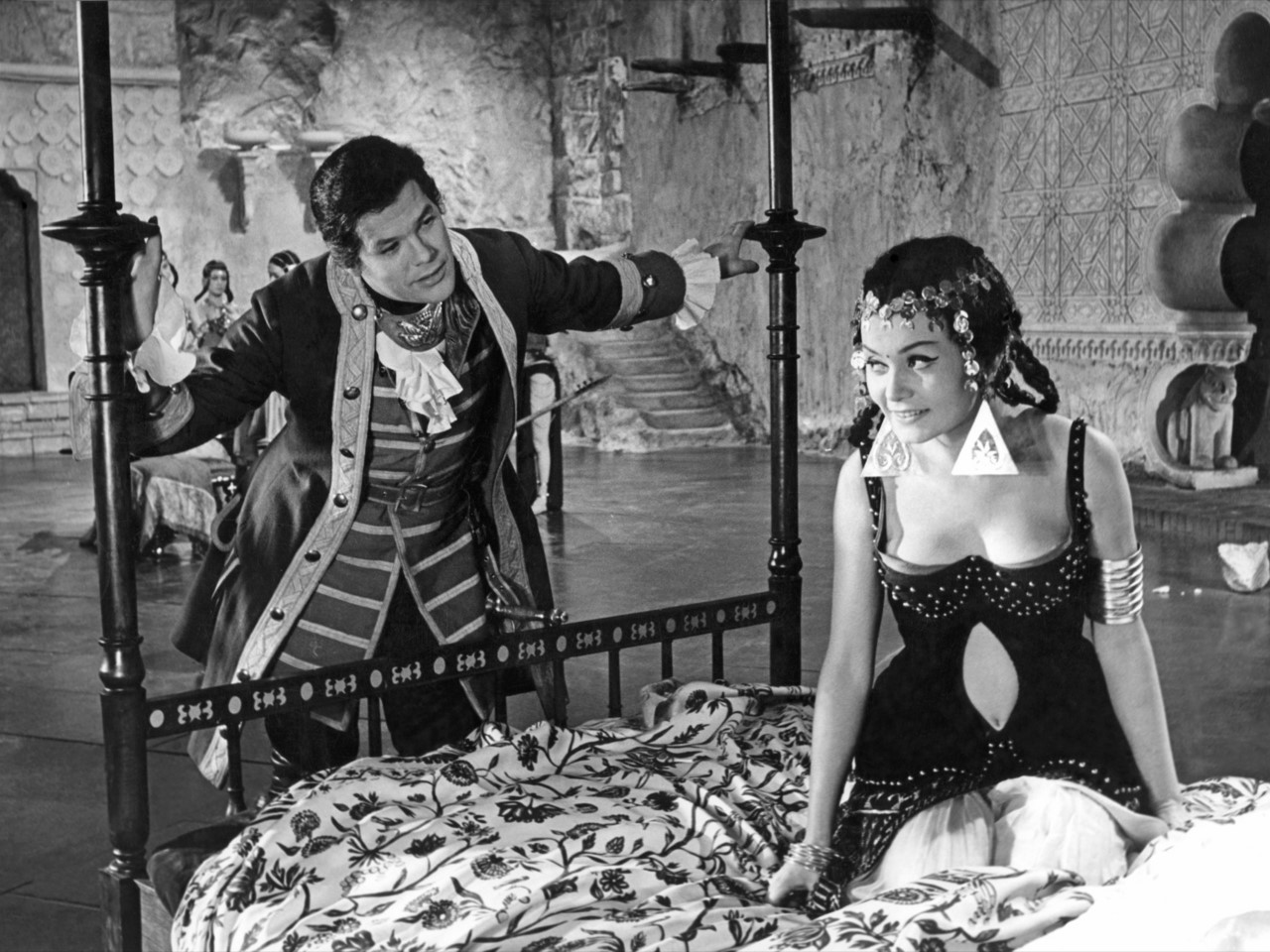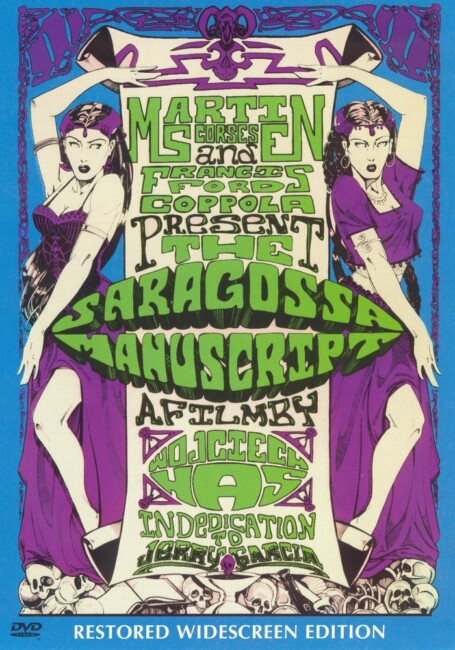(Rekopis Znaleziony W Saragossie)
Crew
Director – Wojciech J. Has, Screenplay – Tadeusz Kwiatkowski, Based on the Novel The Manuscript Found at Saragossa by Jan Potocki, Photography (b&w) – Mieczyslaw Jahoda, Music – Krzysztof Penderecki, Production Design – Tadeusz Myszorek & Jerzy Skarzynski.
Cast
Zbigniew Cybulski.(Captain Alfons van Worden), Stanislaw Igar (Don Gaspar Soarez), Zdzislaw Maklakiewicz (Don Roquero Busqueroz), Elzbieta Czyzewska (Frasquetta), Jadwiga Krawczyk (Donna Inez Moro) Gustaw Holoubek (Don Pedro Velasquez), Bogumil Kobiela (Don Toledo), Franciszek Pieczka (Pascheco), Slawomir Lindner (Van Worden’s Father), Iga Cembrzynska-Kondratiuk.(Princess Emina), Joanna Jedryka (Princess Zibelda), Krzysztof Litwin (Don Lopez Soarez), Kazimierz Opalinski (Hermit), Adam Pawlikowski (Cabalist), Janusz Klosinski (Frasquetta’s Husband)
Plot
During the midst of the Napoleonic Wars, a cavalry officer takes refuge in a ruined inn. There he discovers an illustrated manuscript and becomes absorbed in its stories. In the manuscript, a Spanish officer, Captain Alfons van Worden, ignores warnings to ride through a dangerous pass and comes to an inn that has a luxuriant cave beneath. There he is invited to spend the night with two Arabic princesses who say they have both been destined to marry him. He keeps waking up from the encounter in a field surrounded by hanged thieves where he is pursued by the Inquisition. He encounters various travellers who narrate stories and stories within stories of possession by The Devil, duels for honour, thwarted love and religion, all of which eventually form a complex interwoven tapestry.
The Saragossa Manuscript is a film that has built up a cult reputation, largely through its obscurity. It is based on a classic text originally published in Poland in 1804, one that has gone through a number of revisions and additions since.
The film is a layered tapestry of tall tales of strange and bizarre events (although actual fantastic content is fairly minimal). The story for a long time (the film is nearly three hours in length) sinks into a morass of digressions and tales within tales, which end up becoming so labyrinthine as to leave one completely lost by the time the film returns to the original tale. (Although in a moment of witty meta-fictionality, the characters within the stories confess that they too are having difficulty following the digressions – but are told to sit back as it will all make sense eventually). The tapestry does eventually begin to knit together as we see the various strange events – a voice seemingly calling from Heaven, a strange face at the window – all coming to be explained in subsequent stories.

The Saragossa Manuscript is a film that you cannot really enjoy in terms of linear narrative but makes sense more as an elliptical mandala of stories. The result eventually emerges as pleasing and rather amusing. The film is certainly overlong and Wojciech J. Has’s direction is often pedestrian – one can see why it was substantially cut for English release – nevertheless it is an enjoyable film.
The version seen here is the restored 175-minute version. This was cut by nearly an hour for its original subtitled English language release in 1965. The full-length version has been brought back in re-release by producers Francis Ford Coppola and Martin Scorsese. The restoration was originally begun by Grateful Dead lead singer Jerry Garcia before his death in 1995. Certainly, the name of Jerry Garcia attached has brought in a culty midnight audience come seeking a ‘head’ movie, something one suspects the film would not have otherwise attained without Garcia’s name attached.
Trailer here
Full film available here

